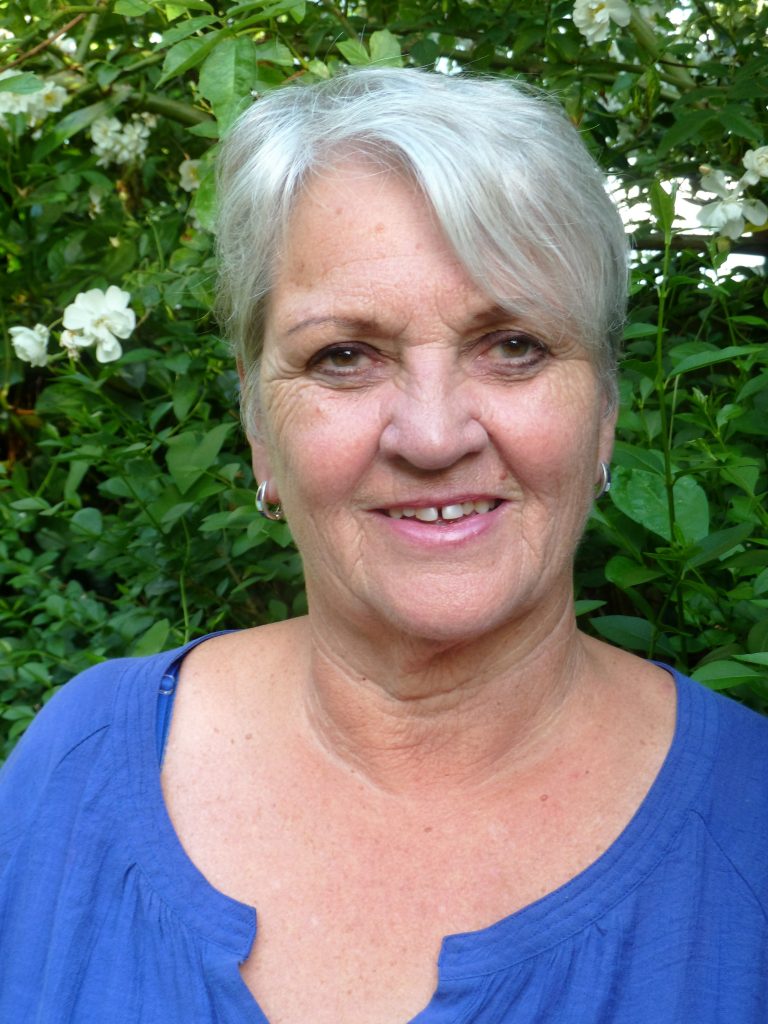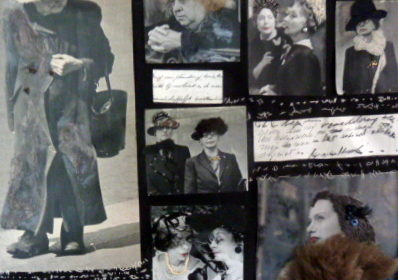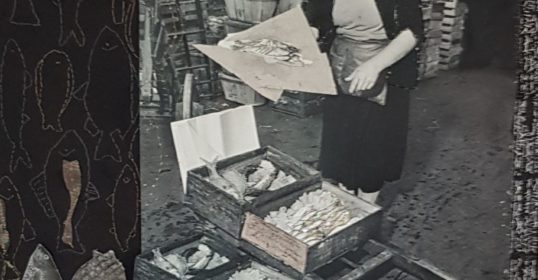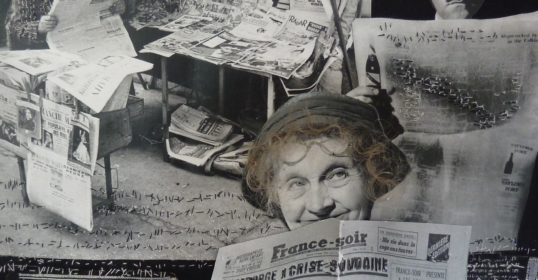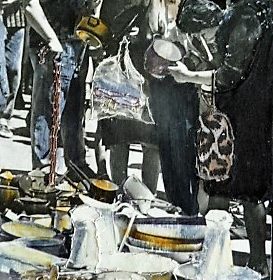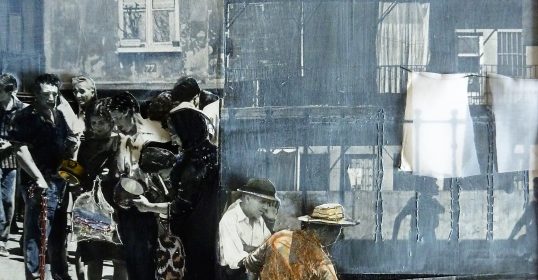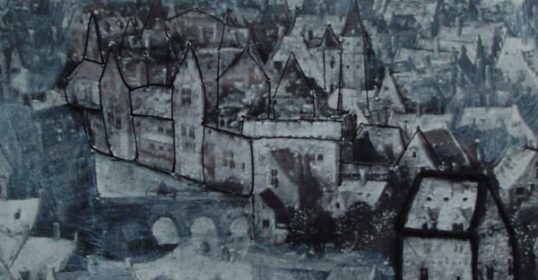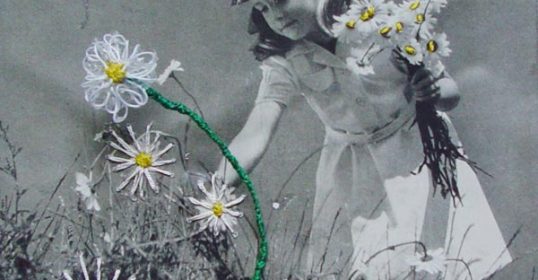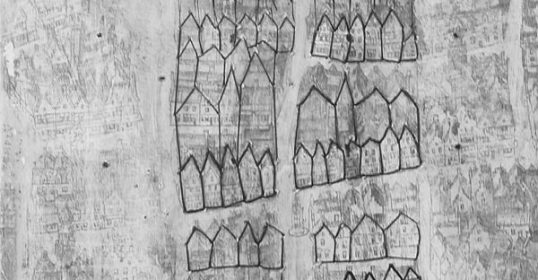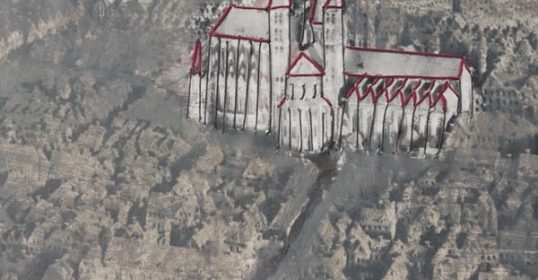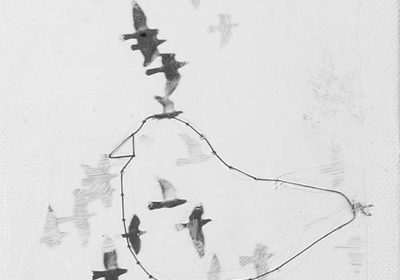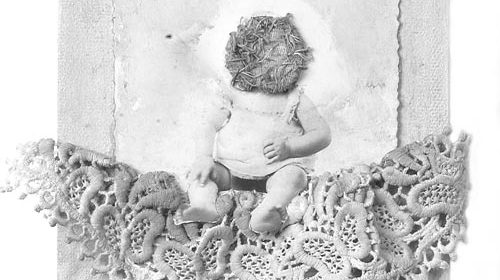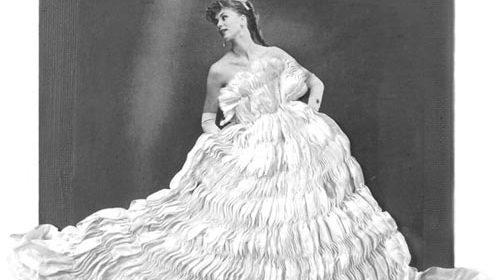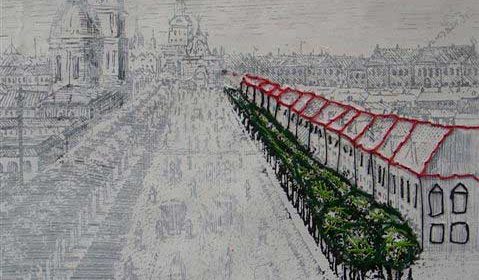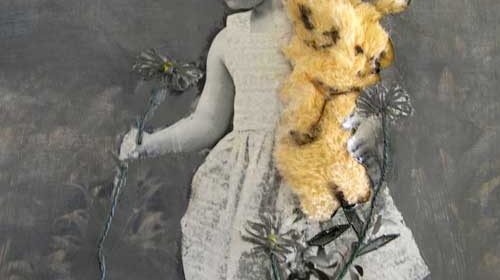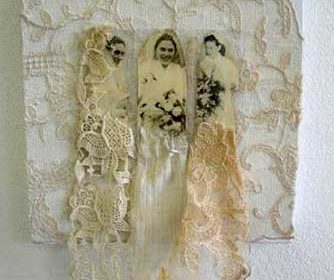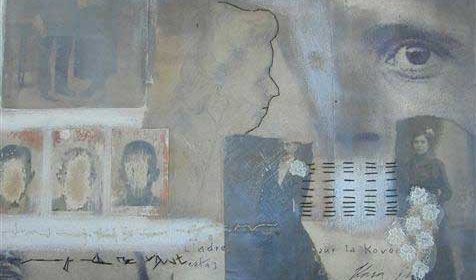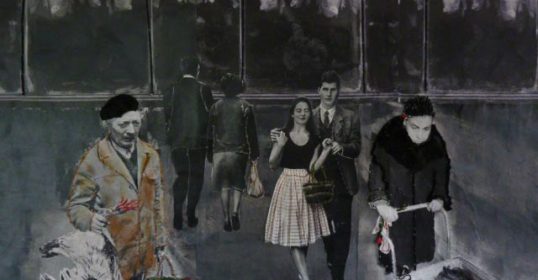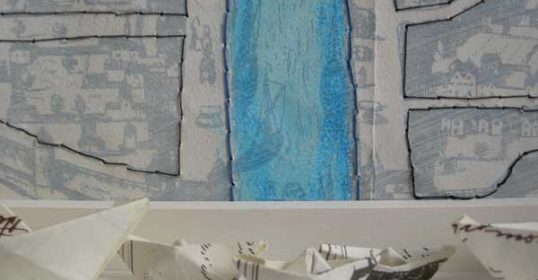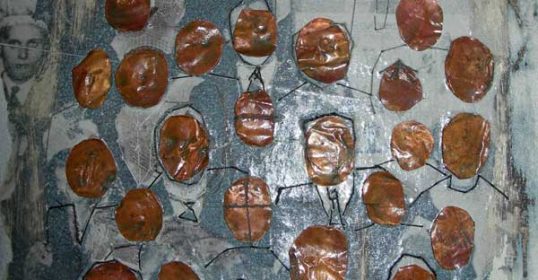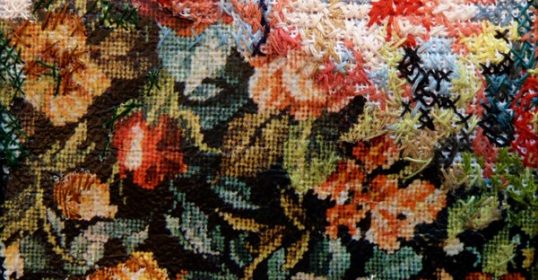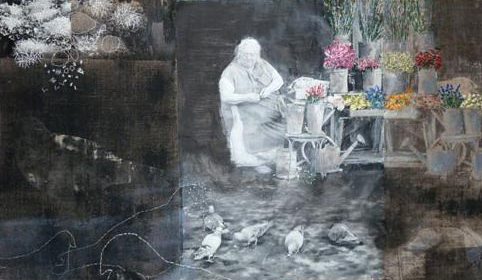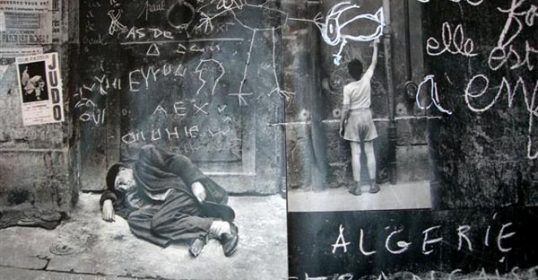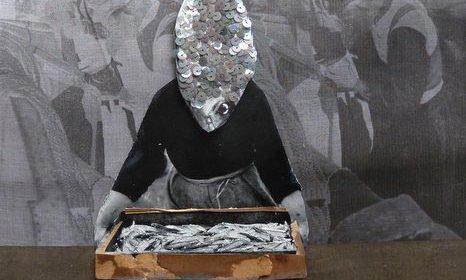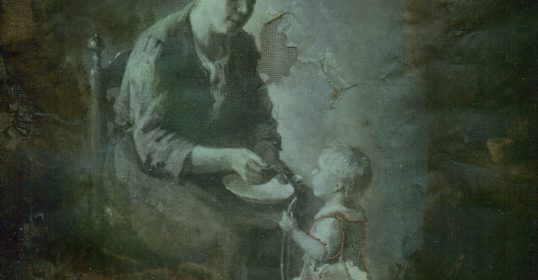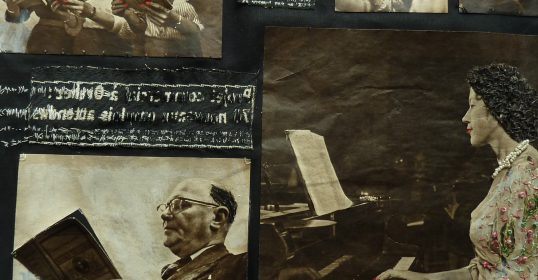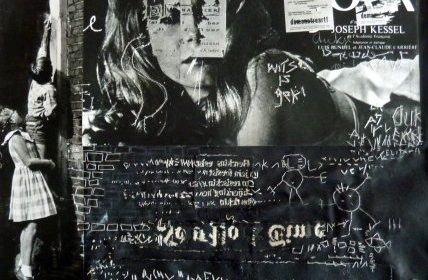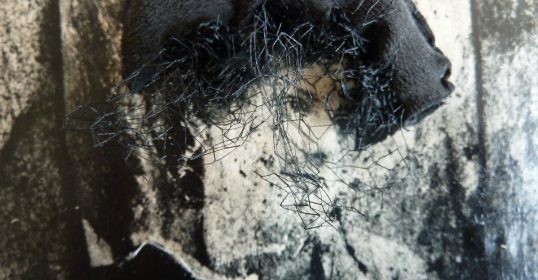Ciska Jonkers
Tastbare beelden verzamel ik in de vorm van zwart-wit foto’s en ander beeldmateriaal. Deze beelden sla ik op in mijn geheugen. De herinnering aan wie men was, het verdriet om het verlies van vergankelijkheid en het herscheppen van nieuwe werkelijkheden.
Dit beeldmateriaal gebruik ik in mijn verhalen. De plaatjes worden geprepareerd en op linnen of katoen gezet, een collage. Met verf, naald en draad geef ik het beeld een nieuw ‘leven’, soms met een knipoog. In mijn laatste serie werken heb ik mij laten leiden door het visuele beeld van een stripverhaal.
Ciska Jonkers (1946)
Na mijn teken – en textiel opleiding heb ik naast mijn vrije werk les gegeven aan creativiteitscentra. Textiele materialen hebben naast acrylverf mijn voorkeur.
Naast het ontwerpen van (getufte) vloertapijten geef ik kleuradvies voor in- en exterieur.
Portfolio
Foto’s eigen opnamen en Jim van Iterson
Interview
1. Tell us about yourself and your work.
My name is Ciska Jonkers (1946).
After following teacher training in textiles and drawing I began giving lessons at a Creative Arts Centre. My basic training was solid and technical, but I missed especially experimentation with materials and techniques, so after my initial study I took various courses seeking new challenges and a deepening in my field. About 15 years ago I began using textiles on my painted canvases. This was the turning point in my work. I discovered the collage and as a result drawing has taken secondary importance in my work.
2. Where does your inspiration come from?
Inspiration flows from the memories and associations that images conjure up. Like many artists I use existing material for my work. I am fascinated by the idea of breathing new life into a collection of pictorial material that has a whole life behind it. I collect mostly black and white photos from the fifties and sixties. I store these in my memory and use them in my collages. They are the memories of who one was; the sorrow of loss, of ephemerality and the creation of a new reality.
With this pictorial material I create my own stories. The images are prepared and put on linen or cotton, the foundation of the collage. With paint, needle and thread I give the picture a new ‘life’, sometimes tongue-in-cheek. I call my work mixed media because I use various techniques and material such as paper, paint, textiles and thread. Apart from black and white pictorial material I collect old newspapers and magazines for their language and characters. My latest work has been inspired by the visual images of a comic strip.
3. Which is the need of your art?
Working in my studio provides tranquility and structure in my life in a world that is in constant motion. Embroidering with a needle and thread is an almost meditative occupation. That is most certainly so when I gaze into the garden from my work place and see the flowers and birds. With my collages I want to create a new reality. With paint and yarns an image is created that sometimes gives a nod to the reality of the present. My work is often very detailed with its distinctive style and appearance. My production is low because the work is very time consuming.
4. Tell us about your esperiences at artfairs, exhibitions and others.
I exhibit my work regularly. During the summer my work hangs in the ‘Even (Temporary) Museum’ in Brummen, the village where I live. Recently I exhibited in Bennekom. Often I work on commission with family photographs. That work is mostly so personal that it is not exhibited.
I have become more critical of my participation in art fairs and exhibitions. I question the added value of participation to my work. Visitors at these events more often observe the displayed works from a distance and do not see that they are pieces of embroidery. Only when this is drawn to their attention do they really look.
5. What does it means the art for you?
Art plays an important part in my life. Looking at how fellow artists use their materials not only inspires me but forces me to continue developing my skills. It does not matter if it is ‘old’ or modern art. Even in daily life I can find inspiration around me. Sometimes I let my art convey a message. It can relate to me personally or to fellow human beings and the world. Through the process the people in the photographs, often complete strangers to me, take on a new history in a new situation.
6. What do you think about the art system in your country?
It is a pity that art education has been cut back in the Netherlands. In primary schools there is little time for children to be creative. It is through being creative that children in this busy society learn to express their feelings. The influence of the smart phone and computer games demand so much time that there is less and less time to gain inspiration from messing around with paint, wood or clay.
Fortunately more after-school schemes are being set up to encourage children to develop creatively. A youth art society has been founded in my community to bring the youth in contact with all facets of art. Local artists share their own discipline with the youth by working together.
7. What is the future of art?
Art will always exist and be created. If you have the inner drive, you seek and surely find your way. There are excellent art academies in the Netherlands. Although the computer has become a graphical means for many artists I hope that many young artists will continue to work with the ‘old, existing’ materials. A clear commitment is required from the present education system to embrace new developments while at the same time cherishing older accomplishments. The craft must not be lost to this turbulent world.
Neem contact met mij op
Vul onderstaand formulier in en ik zal zo spoedig mogelijk contact met u opnemen.
- 0575-470453
- 06-20037237
- info@ciskajonkers.nl
